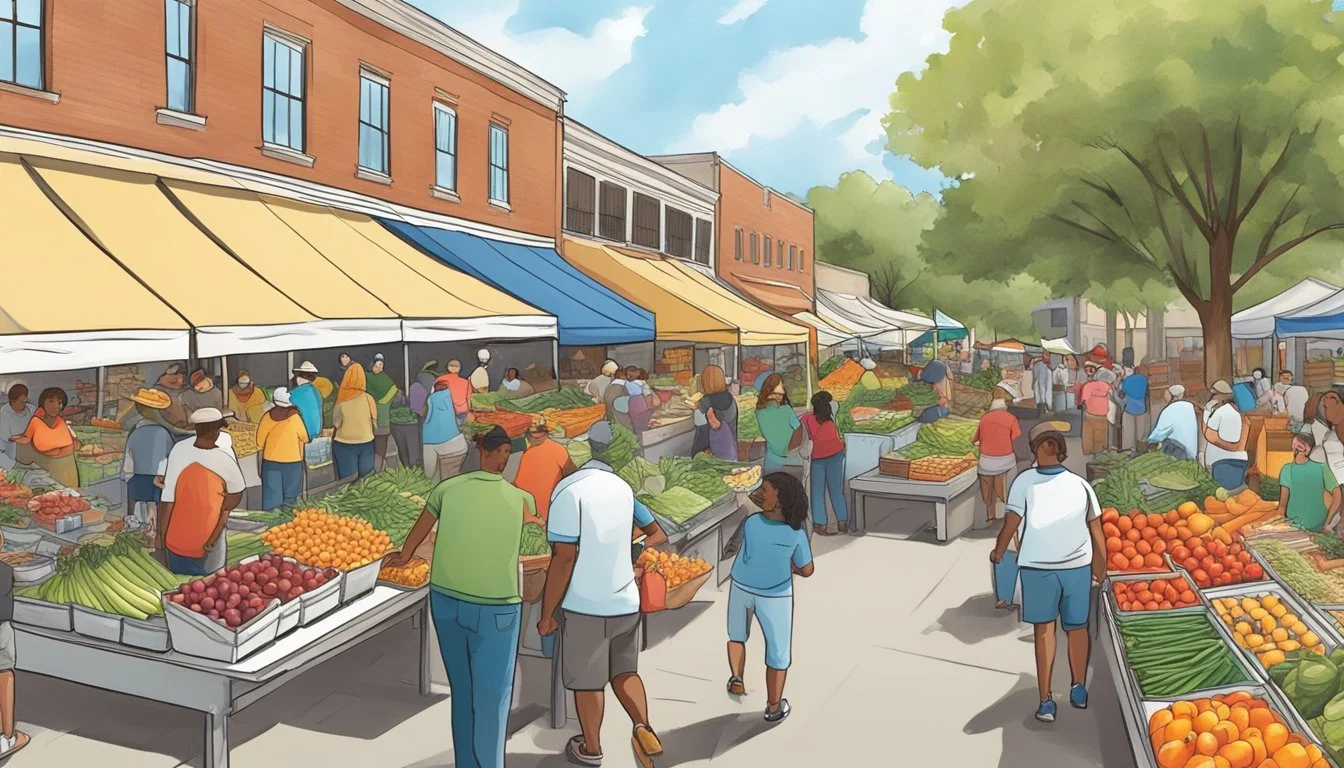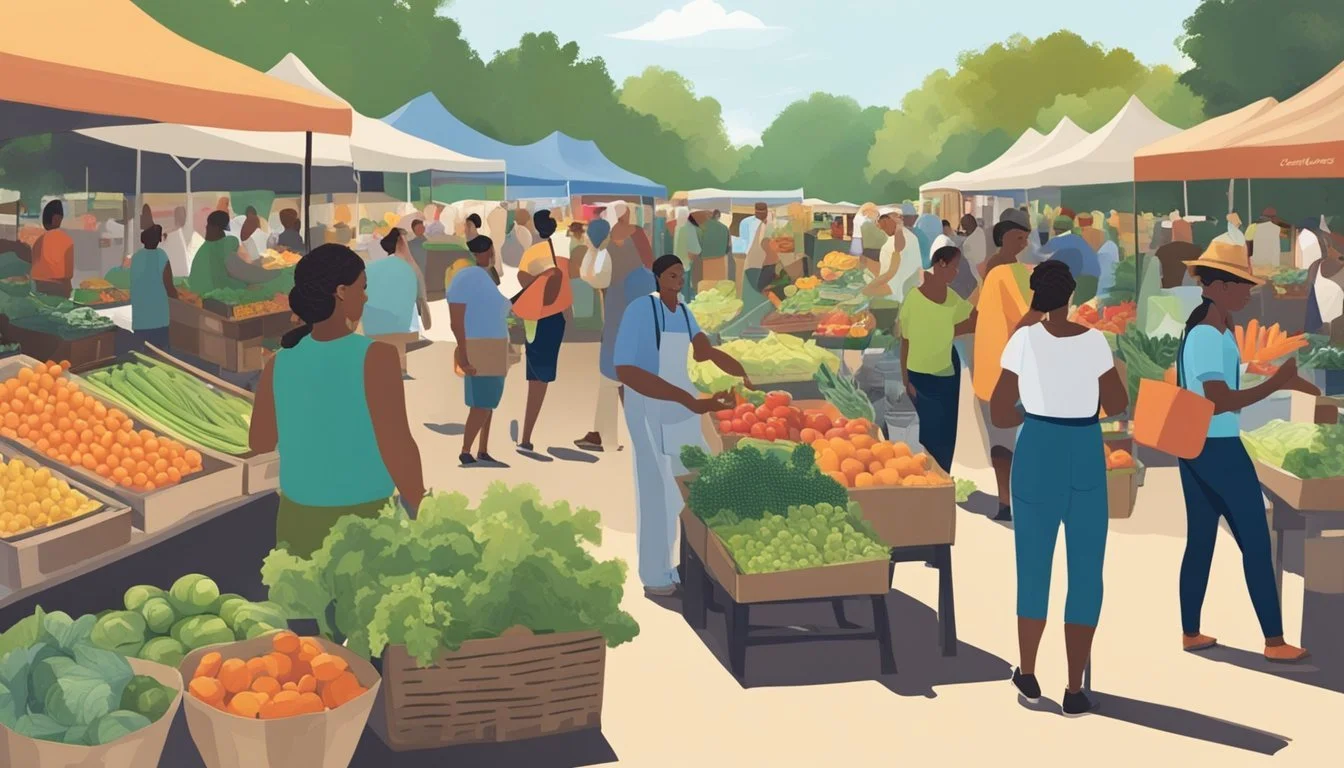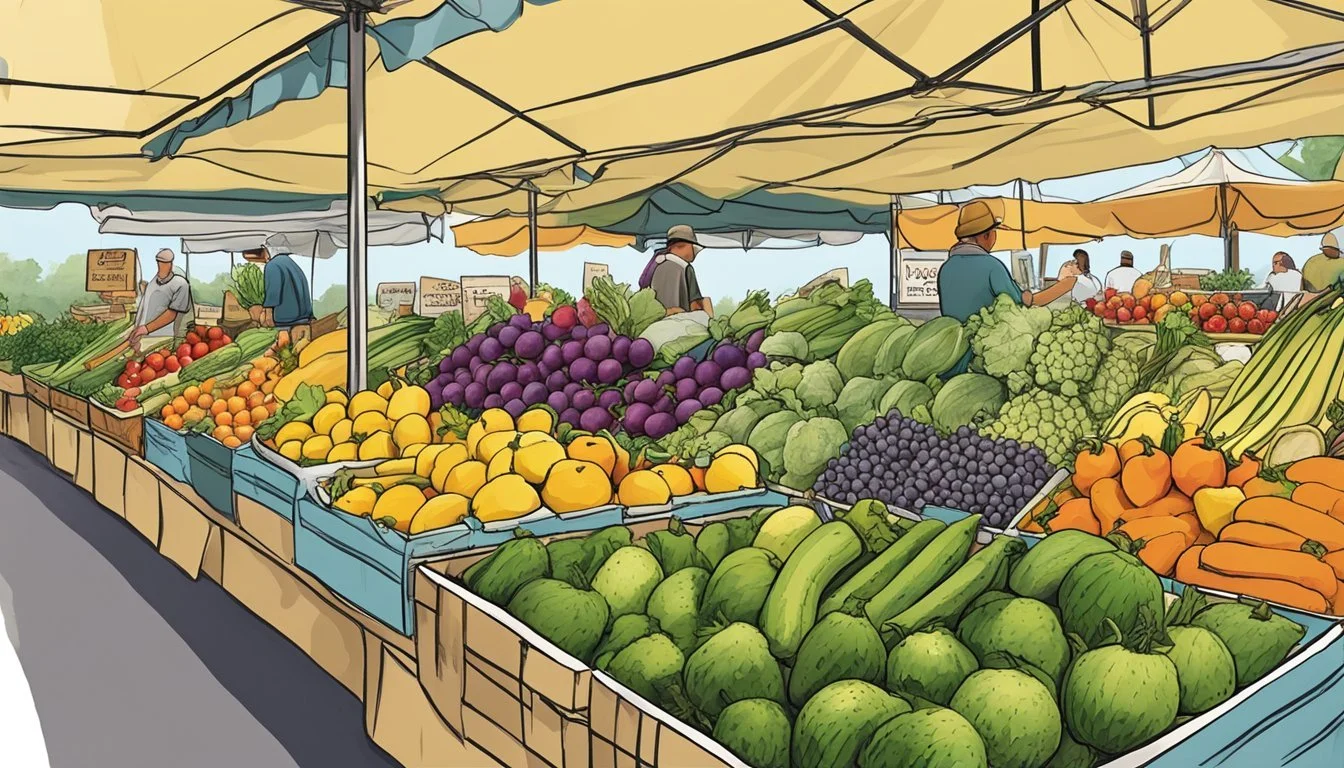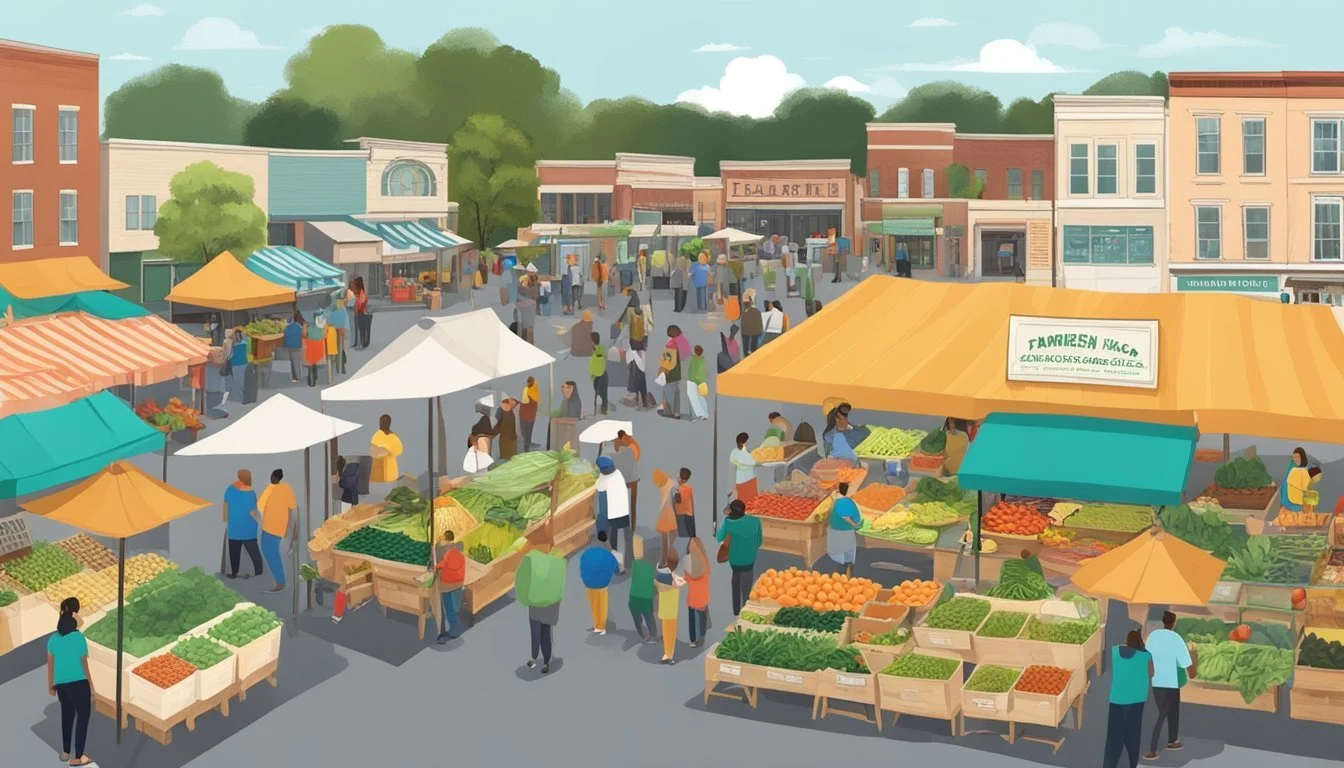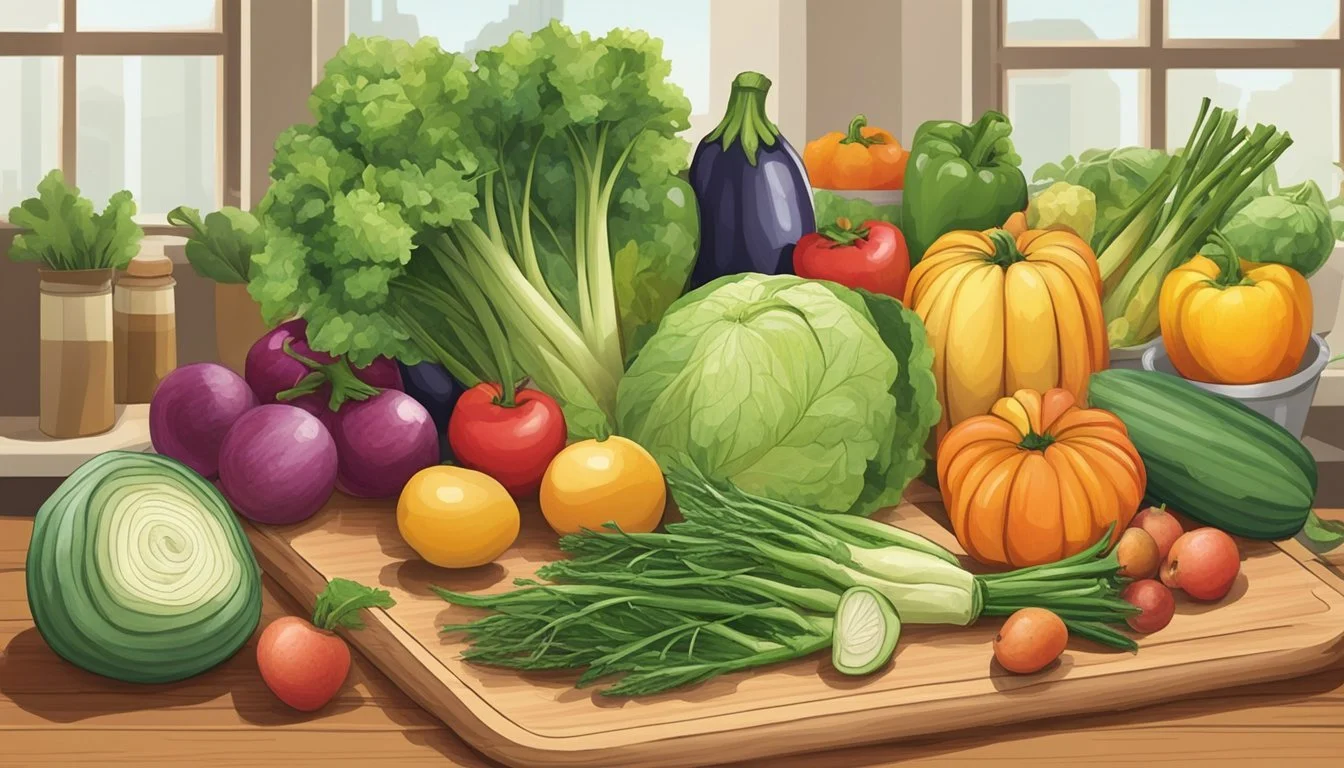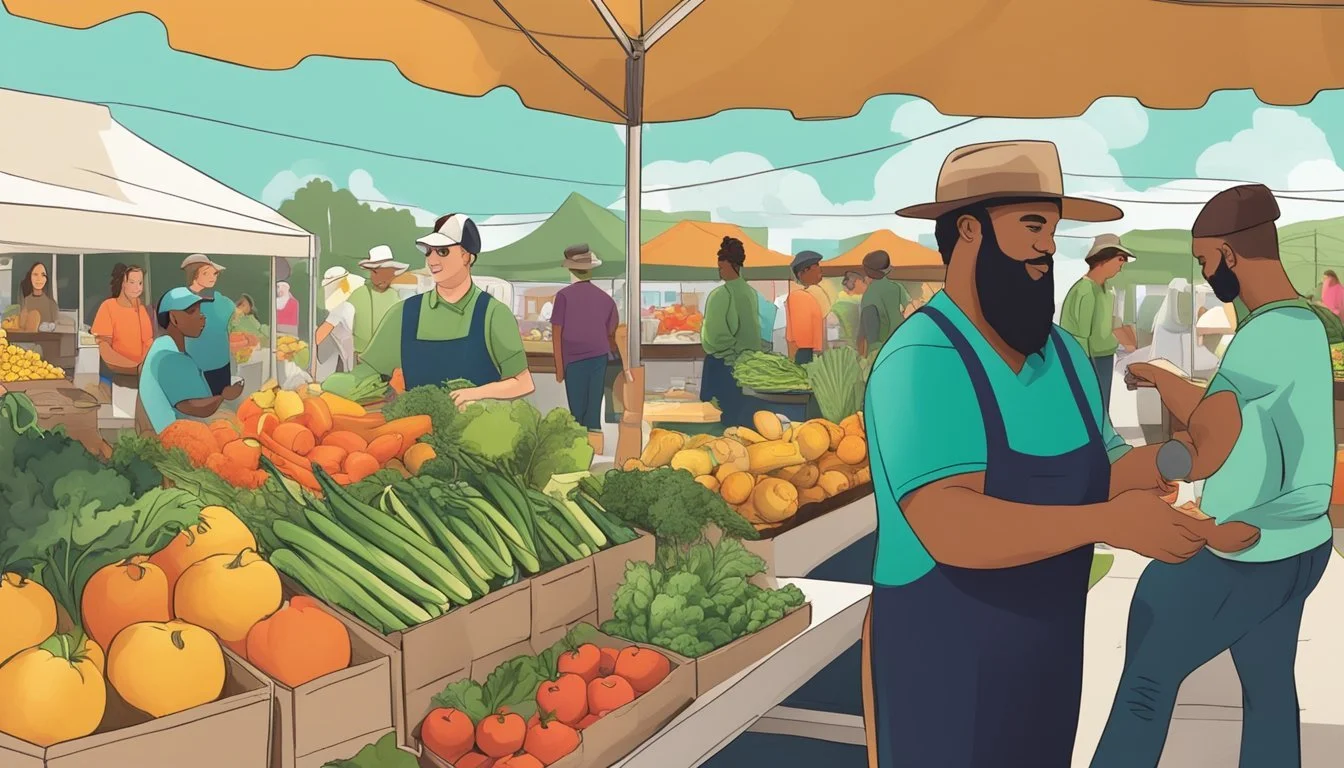Community Supported Agriculture (CSA) in Lafayette, LA
A Guide to Local Produce Subscription
Community Supported Agriculture (CSA) has taken root in Lafayette, LA as a sustainable model for farming and food distribution. This approach connects local farmers with consumers, providing a direct line from farm to table. Members of the CSA purchase shares of a farm's harvest in advance, securing a season's worth of fresh produce and, in some cases, additional farm products. In Lafayette, CSA programs like Earthshare Gardens offer an array of produce distributed throughout three seasons—Spring, Summer, and Fall—each lasting 12 weeks.
In this community-engaged system, consumers not only get access to fresh, homegrown goods, but they also share in the risks and benefits of food production. This fosters a sense of community and support for local agriculture. The CSA model stands as a testament to Lafayette's commitment to sustainability and local farming practices. By being a part of a CSA in Lafayette, consumers directly contribute to the stability and growth of small-scale, local farming, ensuring that such operations remain an integral part of the area's agriculture landscape.
The Fundamentals of CSA in Lafayette, LA
Community Supported Agriculture (CSA) in Lafayette, LA, establishes a symbiotic relationship between local farmers and community members. Through CSA, consumers purchase subscriptions, or shares, from local farms, supporting agricultural efforts and ensuring a weekly distribution of fresh produce.
Membership Benefits Members enjoy the harvest of a variety of vegetables and other farm products, reflecting the seasonal bounty of the land. This direct farmer-to-consumer model fosters food security and sustains farmer livelihoods, creating a resilient local food system.
Season Duration Spring 12 weeks Summer 12 weeks Fall 12 weeks
Farmers gain financial stability through upfront membership fees, which aids in planning and farm management. In return, members receive fresh and local produce, emphasizing a commitment to healthy, sustainable living.
Community Engagement CSAs in Lafayette encourage community engagement, where members often have the opportunity to visit the farms and meet the people behind their food. This proximity creates a vested interest in the stewardship of the land and promotes a better understanding of agricultural practices.
Contribution to Economy By participating in a CSA, members contribute directly to their local economy, ensuring that their investment stays within Lafayette, fueling both economic and communal growth. It is a partnership rooted in trust, where the community and farmers forge a bond centered on mutual respect and the shared goal of sustainable agriculture.
Benefits of Joining a CSA
Joining a Community Supported Agriculture (CSA) program in Lafayette, LA offers a wealth of advantages, from enhancing sustainable farming methods to boosting the local economy. Members receive a plethora of fresh, seasonal produce while directly fostering a closer connection with local farmers.
Supporting Sustainable Agriculture
CSA programs are vital for sustainable agriculture, as they help in maintaining soil health and reducing carbon emissions by limiting the distance food travels. By investing in a CSA, members are directly contributing to environmentally friendly farming practices that minimize synthetic pesticides and fertilizers, which are often associated with traditional large-scale farming. As partners with local farmers, consumers share the risk and benefits, establishing a trust-based relationship that prioritizes the planet's wellbeing.
Seasonal Eating and Health Benefits
One of the core benefits of subscribing to a CSA is the access to a variety of seasonal produce. Eating seasonally aligns with the natural growing cycles, which can optimize the nutritional value of food. Local farmers tend to pick produce at the peak of ripeness, ensuring that members enjoy the freshest and most flavorful fruits and vegetables. Seasonal eating encourages a diverse diet that is often richer in vitamins and nutrients, promoting better health outcomes.
Strengthening Local Economy
CSA members play a crucial role in sustaining the local economy. By purchasing shares from CSAs, consumers directly support local farmers, ensuring that their money stays within the community. This financial stability allows farmers to focus on quality and sustainable practices rather than merely output quantity. Additionally, with reduced reliance on long-haul transportation, CSAs help to lower the overall carbon footprint associated with food distribution, aligning economic advantages with environmental stewardship.
How CSAs Operate
Community Supported Agriculture (CSA) in Lafayette, LA is a partnership between local farmers and community members who receive fresh, seasonal produce directly from the farm. This model is rooted in the commitment of its members and the shared understanding of agriculture's seasonal nature.
Membership and Shares Structure
Members of a CSA buy shares of the farm's harvest in advance of the growing season. Memberships are often available in different sizes, catering to individual or family needs, and typically last for one growing season split into spring, summer, and fall. For example, in Lafayette, a CSA might offer a 12-week share for each season where members weekly pick up a box of fresh produce.
Shared Risks and Commitment
CSA members share the risks of farming with the grower, such as weather challenges or pest issues. This commitment means that both the quantity and variety of produce can vary week by week. However, it also allows members to develop a closer relationship with their food source and supports sustainable farming practices.
Understanding Local Seasonality
The CSA model revolves around seasonal food availability. Members become familiar with the local growing season and the timing of harvests, which encourages cooking with ingredients at the peak of their flavor and nutritional content. In Lafayette, local seasonal selections might include Creole tomatoes in summer or satsumas in fall, aligning local culinary traditions with sustainable consumption.
Types of Produce and Products Offered
Community Supported Agriculture (CSA) programs in Lafayette, LA offer a rich assortment of fresh, locally-grown produce, as well as a range of other farm products. Subscribers can expect a diverse selection of goods, reflecting the fertile region's agricultural variety.
Variety of Vegetables and Fruits
CSAs in Lafayette typically include a wide array of vegetables such as tomatoes, peppers, cucumbers, leafy greens, and root vegetables, aligning with the seasonal availability. The fruit selection is equally varied, with offerings like berries, peaches, and citrus fruits based on the time of year. These selections rotate with the seasons, ensuring that members receive the freshest produce at its peak:
Spring: Lettuce, spinach, strawberries
Summer: Melons, tomatoes, sweet corn
Fall: Pumpkins, apples, sweet potatoes
Beyond Produce: Eggs, Meat, and More
Many CSAs in Lafayette expand their offerings beyond fresh produce to include:
Eggs: Often free-range and richer in flavor than store-bought counterparts.
Meat: Typically grass-fed beef, pasture-raised poultry, and pork available from certain farms.
Cheese: A variety of artisanal cheeses may be offered by some CSA programs that collaborate with local dairy farms.
Other items often found in CSAs are flowers and herbs, adding vibrancy and aroma to the weekly bounty. This not only supports the local economy but also provides consumers with a deeper connection to the source of their food.
Getting Involved with CSAs
Community Supported Agriculture (CSA) programs in Lafayette offer consumers a way to become shareholders in local food systems. By participating in CSAs, individuals support local agriculture and receive fresh, seasonal produce directly from the farm.
Finding a CSA Near You
To locate a CSA in the Lafayette area, interested individuals can start by visiting websites like LocalHarvest, which lists Earthshare Gardens among other local CSA offerings. These online resources provide details on available CSA programs, including the types of shares offered—often a box of vegetables and potentially other farm products. Additionally, consumers can inquire at farmers' markets or through social media community groups dedicated to local food and agriculture.
Questions to Ask Before Joining
When considering joining a CSA, consumers should ask key questions to ensure the CSA aligns with their needs. Here are some essential questions to consider:
Duration: How long is the season for the CSA share? (Local CSAs typically run for 12-week intervals for each Spring, Summer, and Fall season.)
Produce: What types of produce are included? Is there a variety, and does it change weekly?
Share Size: What sizes of shares are available? (Some CSAs offer different size options to accommodate different household needs.)
Pick-Up Locations: Where and when are CSA shares available for pick-up?
Participation: Is there an expectation for shareholders to participate in farm activities?
Payment Structure: How is payment handled? Are there payment plans or do consumers pay upfront?
Communication: How does the CSA communicate with its shareholders? (Look for frequent and clear communication regarding available produce, pick-up times, and any changes to the service.)
By thoroughly researching and asking these questions, potential shareholders will be better prepared to engage in a CSA that matches their preferences and supports local farmers effectively.
Historical Context and Global Perspective
This section delves into the origins of the Community Supported Agriculture (CSA) model and its expansion, underscoring the pivotal roles played by its pioneers and the broader impact on the global agricultural landscape.
CSA Origins and Pioneers
Community Supported Agriculture (CSA) began as a response to the challenges posed by industrial agriculture. Its goal was to create a closer connection between those who grow food and those who consume it. The concept of CSA took root in the 1960s when Jan Vander Tuin brought the idea from Switzerland to the United States. Meanwhile, Robyn Van En, a farmer from Massachusetts, co-founded one of the first CSAs in North America at Indian Line Farm. Her work was foundational, and she later helped spread the concept widely.
CSA Movement Growth and Impact
Since its inception, the CSA model has spread globally, providing a counter-narrative to industrial agriculture by emphasizing local economies, ecological sustainability, and community resilience. The growth of CSAs has led to the formation of supportive networks and organizations, such as the Robyn Van En Center, which serve as resources for those interested in developing local agricultural partnerships. Through these efforts, CSA has gained significance globally, with numerous projects demonstrating how local initiatives can have a far-reaching influence on food systems.
Environmental Impact and Food Systems
Community Supported Agriculture (CSA) in Lafayette, LA contributes significantly to sustainable practices and the local food system's resilience. These efforts are aimed at reducing environmental impact, enhancing food security, and lowering carbon emissions.
Reducing Carbon Emissions and Waste
Carbon Footprint: CSAs typically involve shorter transportation distances for food, as products are sourced locally. By eliminating or significantly shortening the supply chain, the carbon emissions associated with transportation are dramatically reduced. CSA members typically receive fresh produce, meats, and other farm products directly from the farm, bypassing the need for long-distance freight, which is a major contributor to greenhouse gas emissions.
Waste Reduction: CSA encourages sustainable farming practices such as organic agriculture and minimal packaging. Reduced packaging leads to less waste in landfills. Additionally, because CSA produce is distributed based on the number of members and their consumption, there's a natural alignment of supply and demand, further minimizing food waste.
Food Security and Resilience
Local Food Supply: CSAs provide a reliable source of fresh, local produce, contributing to the food security of the Lafayette community. The direct connection between consumers and producers fosters a food system less susceptible to disruptions in the supply chain that can occur with traditional retail models.
Resilient Agricultural Practices: Farmers involved in CSA are often committed to using sustainable farming practices that are not only environmentally friendly but also promote soil health and biodiversity. These practices build resilience against climate change impacts and ensure long-term agricultural viability in the Lafayette region.
By focusing on both environmental impact and systemic resilience, CSAs in Lafayette are at the forefront of a movement toward a more sustainable and secure food system.
Challenges and Considerations
In the context of Lafayette, LA, Community Supported Agriculture (CSA) faces several logistical and relational challenges. These center primarily on distribution and communication, requiring careful planning and management.
Overcoming Distribution Hurdles
Distribution remains a crucial issue for CSAs, as they must ensure that fresh produce reaches members efficiently and reliably. Lafayette, LA, has the advantage of a connected infrastructure, but CSAs must still strategize to optimize delivery routes and pickup points. This can involve:
Establishing centralized collection points for ease of access.
Integrating drop-off schedules with members' availability.
Managing Expectations and Communication
Clear communication is key to managing members' expectations. CSAs must foster trust through transparency about seasonal availability and potential crop variations. Effective communication strategies might include:
Regular newsletters detailing harvest forecasts and delivery schedules.
Active engagement on social media platforms to provide updates and gather member feedback.
In both distribution and communication efforts, membership satisfaction hinges on consistent and honest interaction between CSAs and their members.
Support and Resources for CSA Members
Community Supported Agriculture members in Lafayette, LA, benefit from a range of educational materials and opportunities to engage with the community through events and volunteering. These resources are designed to enhance the CSA experience and deepen members' understanding of sustainable agriculture.
Educational Materials and Events
CSA farms in Lafayette often provide members with educational materials that cover various aspects of sustainable farming and food production. This can include newsletters, seasonal recipes, and tips on food preservation. Additionally, members are invited to participate in farm-related events such as:
Workshops: Hands-on experiences in organic farming practices.
Farm Tours: Opportunities to learn about the day-to-day operations of a CSA farm.
Cooking Classes: Instruction on how to prepare meals using the seasonal produce from the CSA shares.
Events Calendar:
Month Event Type Description April Planting Workshop Instruction on planting seasonal crops. June Farm Tour Guided exploration of the farm facilities. September Harvest Cooking Class Cooking class focused on autumn harvest recipes.
Community Engagement and Volunteering
CSA members are encouraged to get involved with the local food community by volunteering. Volunteering opportunities at the CSA farms may include:
Harvesting: Assisting with the gathering of crops during peak seasons.
Planting Days: Helping to sow seeds at the start of a growing period.
Educational Outreach: Supporting initiatives to educate the broader community about the benefits of CSAs and local food systems.
Volunteering benefits members by providing a deeper connection to the food they eat and awareness of the labor that goes into sustainable farming. It creates a sense of unity and shared purpose within the community, fostering a strong, local food network.
Cooking and Preparation Tips
When dealing with farm-fresh produce from a Community Supported Agriculture (CSA) share in Lafayette, LA, individuals have the opportunity to explore a variety of cooking techniques. These tips aim to enhance the flavor and nutritional value of vegetable consumption.
Leafy greens: Store with a damp paper towel in a sealed bag to maintain freshness.
Root vegetables: Keep cool and dry, separated from apples and bananas to avoid premature ripening.
Preparation Basics:
Wash thoroughly: Rinse vegetables under cold water to remove any soil or potential residues.
Peel selectively: Retain nutrient-rich skins on vegetables like carrots and potatoes where appropriate.
Roasting: Elevates sweetness in vegetables like beets or carrots. Toss with olive oil, salt, and roast until tender.
Steaming: Preserves color and nutrients, ideal for broccoli or green beans. Steam until just tender.
Sautéing: Quick method for leafy greens, like Swiss chard or kale, in garlic and a touch of oil.
Batch cooking: Allocate a day to prepare meals and use a variety of vegetables from the CSA box.
Freezing: Some vegetables can be blanched and frozen for later use, ensuring no waste.
Serving Suggestions:
Salads: Combine multiple raw vegetables for a healthy, crunchy side dish.
Soups: A mix of CSA vegetables can make robust, nourishing soups to be enjoyed or stored for future meals.
Incorporating these tips will not only increase individuals' vegetable consumption but will also honor the integrity of the local produce provided by a CSA in Lafayette, LA.
Conclusion
In Lafayette, Community Supported Agriculture (CSA) systems play an integral role in reinforcing the relationship between local farmers and their community. Through CSA, consumers engage in a symbiotic partnership providing predictable financial support to farmers, while receiving a share of fresh, often organic produce, throughout the season.
Participation motivations are multifaceted. CSA members primarily join due to a desire for:
Access to high-quality, fresh food
Supporting sustainable agricultural practices
Fostering stronger community ties and food security
The CSA model in Lafayette illustrates a successful implementation of community-oriented agriculture. It aligns consumers' interests in sustainability with local farmers' need for a stable market. This mutualistic approach underscores both ecological and economic resilience.
The direct and personalized connection that CSA fosters helps move beyond a transactional relationship, building a network that celebrates regional agriculture. The growth of CSAs in Lafayette is indicative of this model’s potential to reshape how communities interact with their food systems.

